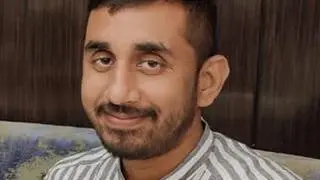Barely a year after it commissioned its second manufacturing facility, in Vadodara, Gujarat, LM Wind Power, which makes blades for windmills, says it will need one more.
The Danish wind blade major set up its first plant in India in Hosakote, Karnataka, back in 1991 – its first plant outside Denmark – but in set up another one in Dabaspet in the State and gradually shut down Hosakote. Now, between Dabaspet and Vadodara, LM has capacity to produce blades for 1,500 MW of wind power plant. This capacity is being raised to 2,000 MW, but the company feels the need for more.
“We would be interested in a third plant,” Marc de Jong, CEO, LM Wind Power, told BusinessLine on the sidelines of Windergy 2017, last week. Windergy 2017 was an international exhibition-cum-conference of the wind industry organised in New Delhi by the Indian Wind Turbine Manufacturers’ Association.
He said that LM’s business in India has grown over 40 per cent each year in the last couple of years. “At the moment, we can’t grow faster than this,” de Jong said.
He said that India was also becoming very cost competitive. China is still cheaper but India is closing the gap fast. Today, it makes sense to make blades in India and sell to other markets in the region. If the Indian market dipped, LM could always export from India, he said.
Why wouldn’t LM create facilities also exclusively for exports? Responding to this question, de Jong said, “Our factories are fully loaded with local business”.
He said he would rather first look to satisfy the growing Indian business. It was in this context that he mentioned the possibility of a third plant.
Asked where the plant will come up, de Jong said LM will take a decision based on considerations such as whether it should be near an upcoming market or near customers’(wind turbine manufacturers’) facilities, or on the coast, for easy exports.
The industry veteran spoke of the recent innovations in blade technology, such as blades with fully or partly with carbon fibre (for making it lighter) and ‘digital blades’, or blades with sensors that detect wind speeds.
Today’s blades are getting longer and 60-metre-long blades are becoming the norm. Offshore wind turbines’ blades are even longer.
Asked if LM made split blades that could be assembled at site, for easy transportability, de Jong said that LM could supply such blades if customers wanted.
He noted that split blades implied a sacrifice in generation efficiency and it was up to the customers to take a call on that.







Comments
Comments have to be in English, and in full sentences. They cannot be abusive or personal. Please abide by our community guidelines for posting your comments.
We have migrated to a new commenting platform. If you are already a registered user of TheHindu Businessline and logged in, you may continue to engage with our articles. If you do not have an account please register and login to post comments. Users can access their older comments by logging into their accounts on Vuukle.